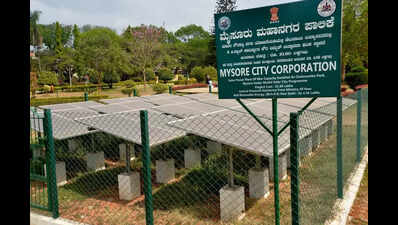- News
- City News
- bengaluru News
- State plans to solarise villages under Centre’s PM Kusum-A scheme
Trending
State plans to solarise villages under Centre’s PM Kusum-A scheme
Bengaluru: Karnataka is considering extending the central govt's Pradhan Mantri Kisan Urja Suraksha Evam Utthaan Mahabhiyan-A (PM Kusum-A) scheme to provide rural areas with solar power. Energy minister, KJ George, said the state will hold discussion with the Centre to facilitate implementation of projects under the scheme.
Karnataka has already successfully rolled out PM Kusum-B and C projects, which provide solar power for irrigation pump sets and agricultural feeders throughout the day. Under PM-Kusum-A, locals in rural areas can set up solar plants to achieve self-reliance in energy generation and consumption.
You Can Also Check: Bengaluru AQI | Weather in Bengaluru | Bank Holidays in Bengaluru | Public Holidays in Bengaluru
Speaking to reporters in Kadur, Chikkamagaluru, Tuesday, George said: "Unlike other Kusum projects, Kusum-A would enable farmers, cooperative groups, village panchayats, farmer producer companies and water consumers groups set up their own solar plants within a radius of 5km from substations."
Sources in the energy department revealed that several state govts, including Telangana, Rajasthan, and Odisha, have already launched projects under the PM Kusum-A scheme. While some financial institutions are funding projects, electricity supply companies (Escoms) are inking power purchase agreements with farmers' associations.
"There are barren and fallow land, or marshy swamps that are uncultivable. While solar units can be set up on barren land, farmers can also set up plants using stilt structures in other areas. Groups can avail subsidy from both central and state govts," said a senior official from the energy department.
George also insisted that there is no shortage of power supply in the state despite record demand of a staggering 18,500MW. "We are able to meet the demand," George said. "Besides, we have also begun work to replace old transmission lines with efficient ones and build new substations. These 100 yet-to-be-completed substations will be able to process 3,000MW. Of this, even if we provide 1,500MW to farmers, the energy crisis in agricultural feeders will be resolved permanently," George said.
End of Article
Follow Us On Social Media










